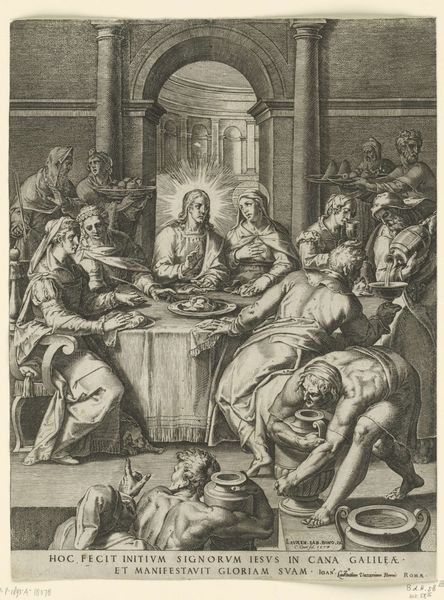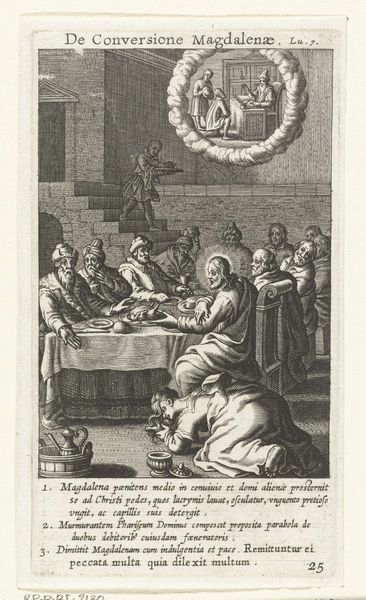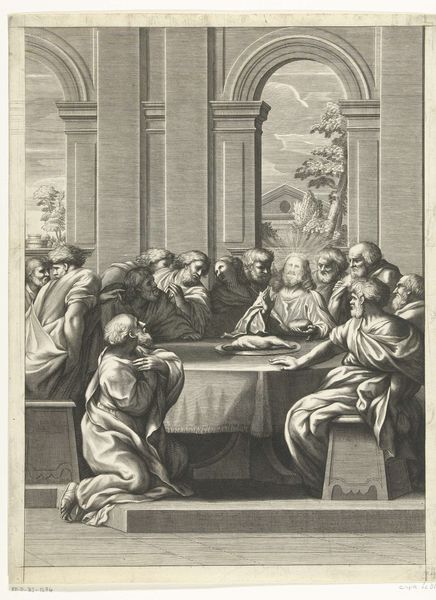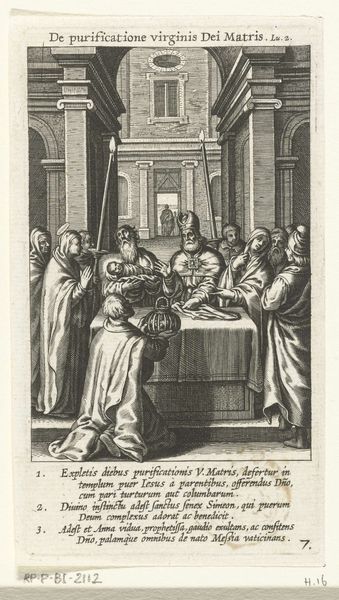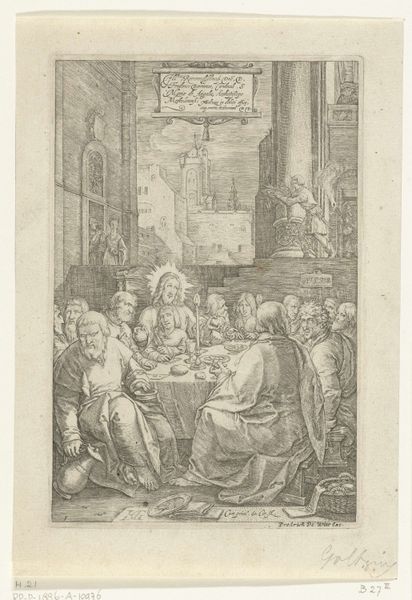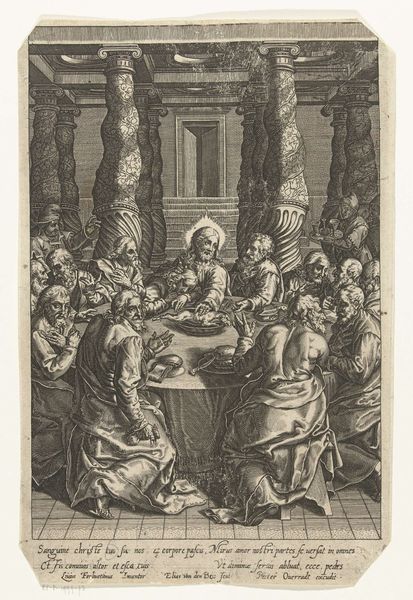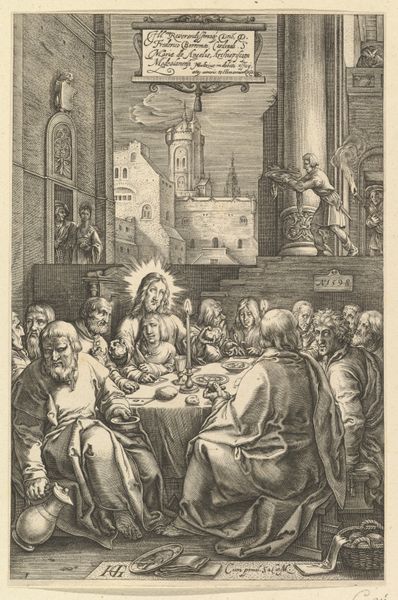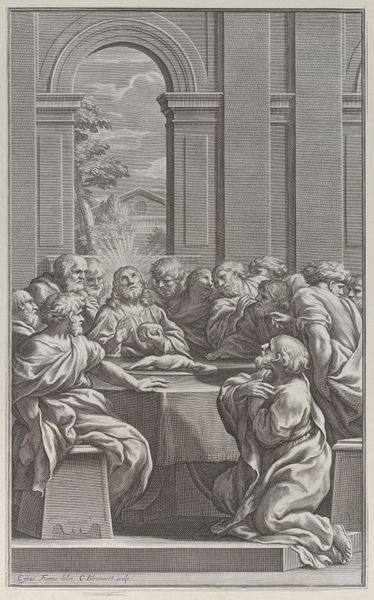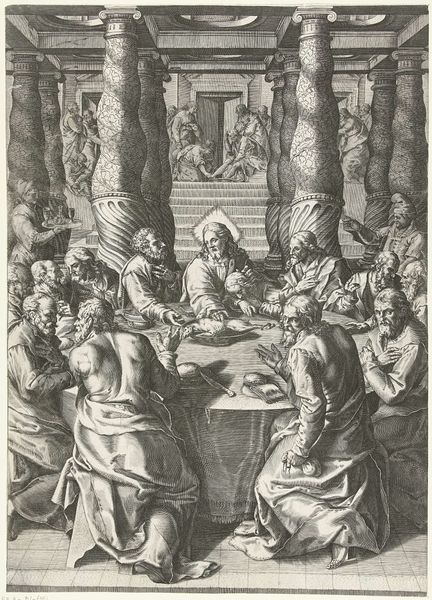
Christus aan de maaltijd in het huis van Simon in Betanië 1590 - 1622
0:00
0:00
boetiusadamszbolswert
Rijksmuseum
print, engraving
#
baroque
# print
#
old engraving style
#
figuration
#
line
#
history-painting
#
engraving
Dimensions: height 133 mm, width 75 mm
Copyright: Rijks Museum: Open Domain
Curator: This engraving, dating sometime between 1590 and 1622, depicts "Christ at the Meal in the House of Simon in Bethany." Boëtius Adamsz. Bolswert is credited as the artist. It's part of the Rijksmuseum's collection, presented in the Baroque style with a linear quality characteristic of engravings. Editor: My first impression is the almost photographic detail. The sheer density of lines gives the scene a compelling weight, doesn’t it? But it feels theatrical as well. Curator: Indeed. This is Baroque, but it lacks the dynamism typical of the era. There's a stillness here. If we delve into the context, such depictions gained popularity in the late 16th century amid theological debates on ritual and grace, thus framing the religious moment of the Bible within socio-cultural debates. Editor: The symbolic resonance is clear. Notice how Mary Magdalene is presented? Pouring ointment, her head tilted with an almost reverent look. The text at the bottom actually names Martha and Magdalene, in service. The unguent alludes to sacrifice, of course, and redemption, not just luxury. This ointment foreshadows the sacrifice Jesus would offer, echoed throughout history and within theological memory. It connects to complex emotions about penitence and love. Curator: It does also speak to artistic movements in the area during that era. Representations of repentance and redemption would offer tangible expressions to connect people with important social narratives from which certain authorities would want to direct away from. The selection of a quotidian household as a primary setting helped normalize those social events as ones that could easily be found in the household. Editor: Look, on the other hand, at how Judas is subtly set apart! Curator: Exactly. We observe a tension. On one side, the loving act; on the other, betrayal taking form. This reminds the viewer how to follow what’s morally right versus an obvious, contrasting moral challenge. It has political intent! Editor: A layered scene, resonating on many levels. Curator: Indeed, capturing a pivotal biblical moment refracted through the sociopolitical lens of its time.
Comments
No comments
Be the first to comment and join the conversation on the ultimate creative platform.
